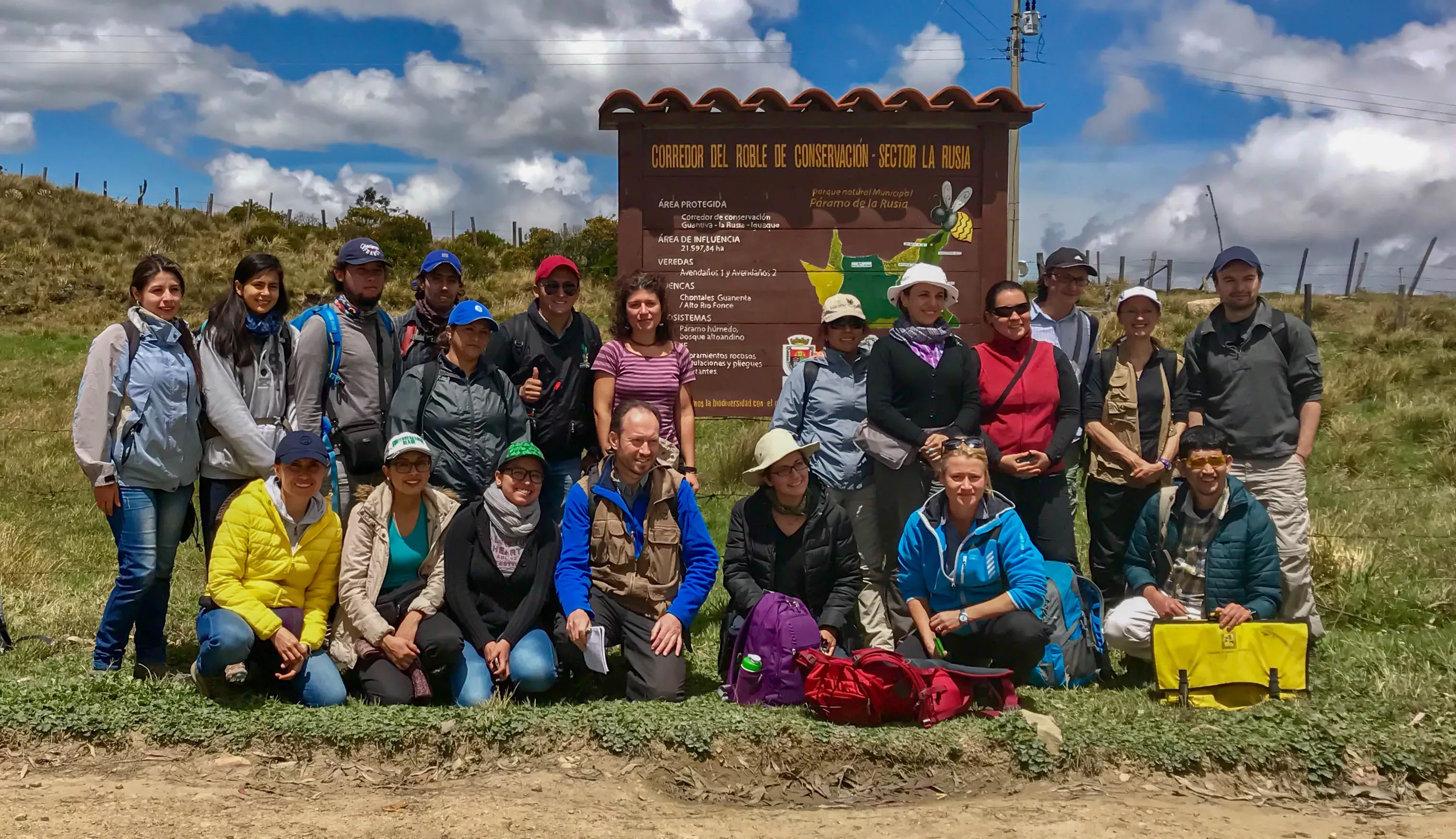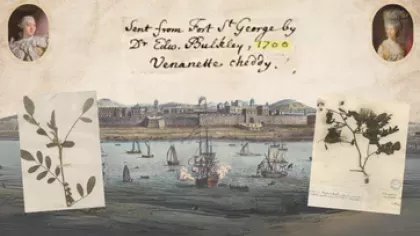29 January 2018
Opening the Boyacá Seed Bank in Colombia
After a Seed Conservation Techniques Training Course by Kew Scientists, the first native seed bank of Colombia was opened in a historic building at the Humboldt Institute, Villa de Leyva.

Boyacá Seed Bank project
In July 2017, Kew scientists started the Boyacá Seed Bank project. Part of Kew’s Colombia Bio Programme, the aims of the project are to build capacity for seed conservation and set up a seed laboratory at the Instituto de Investigación de Recursos Biológicos (The Humboldt Institute).
The first task for the team was to collect seed from 50 priority species from the Boyacá region, especially from an area called the Páramo. This typical high altitude Andean habitat has an extremely diverse and specialised flora, which is facing the challenges of climate change, agriculture and mining. The seed collections will form part of the Humboldt Institute’s national collections and will also support Kew’s target to bank seed from 25 per cent of the world’s plants by 2020. The collections will be prepared and stored in the new seed laboratory by the local scientists and volunteers trained under the project.

Seed Conservation Technique Training Course
On 23 September 2017 we went to the town of Tunja, Boyacá, to deliver training to 18 students, researchers and technicians from eight Colombian institutions. In three days of lectures and practical classes, we covered the principles of seed conservation, from seed collecting and seed processing to long term storage, focussing in particular on how to maximise genetic variability, as well as ensuring the seeds remain viable for as long as possible.
The next day, led by Humberto Mendoza from the Humboldt Institute, we went for a day of fieldwork in the beautiful Páramo la Rusia, at an altitude of nearly 4000m. We started the walk with a bright, hot sun and after a couple of hours the sky turned cloudy and then a powerful thunderstorm drenched us! Despite the weather, the participants made the first two collections for the Boyacá Seed Bank.
Opening the Boyacá Seed Bank
On the last day we travelled back to the Humboldt Institute with two volunteers, along with all the basic equipment to open a seed bank.
All this equipment had to be brought with us on the flight from the UK, all held in two large plastic drums. We brought secateurs and cotton bags for seed collecting, sieves to clean the seed, silica gel and hygrometers to dry seeds and monitor seed humidity as well as dissecting kits and hand lens for seed testing. In the local market we bought all the additional equipment required for seed processing like a set of trays, buckets, mesh and gloves. And so, by the end of the day, with the help and generosity of The Humboldt Institute staff, the Boyacá Seed Bank was opened and operating, ready to welcome the subsequent seed collections.
Back into the field
In November 2017, further seed collecting trips in the Páramo El Valle and La Rusia took place.
The trips were incredibly successful, with over 50 seed collections brought to the new seed bank at Villa de Leyva. The collections include a number of species of the genus Espeletia, which is an important part of the vegetation that characterises the páramo landscape.
With the help of volunteers who took part of the training in September, the collections are now almost completely cleaned, dried and safely stored for future conservation and research.
We would like to thank the UK Department for Business, Energy & Industrial Strategy (BEIS) for their support on this project. Thank you also to the Humboldt Institute and Universidad Pedagógica Tecnológica de Colombia (UPTC), Colombia.





